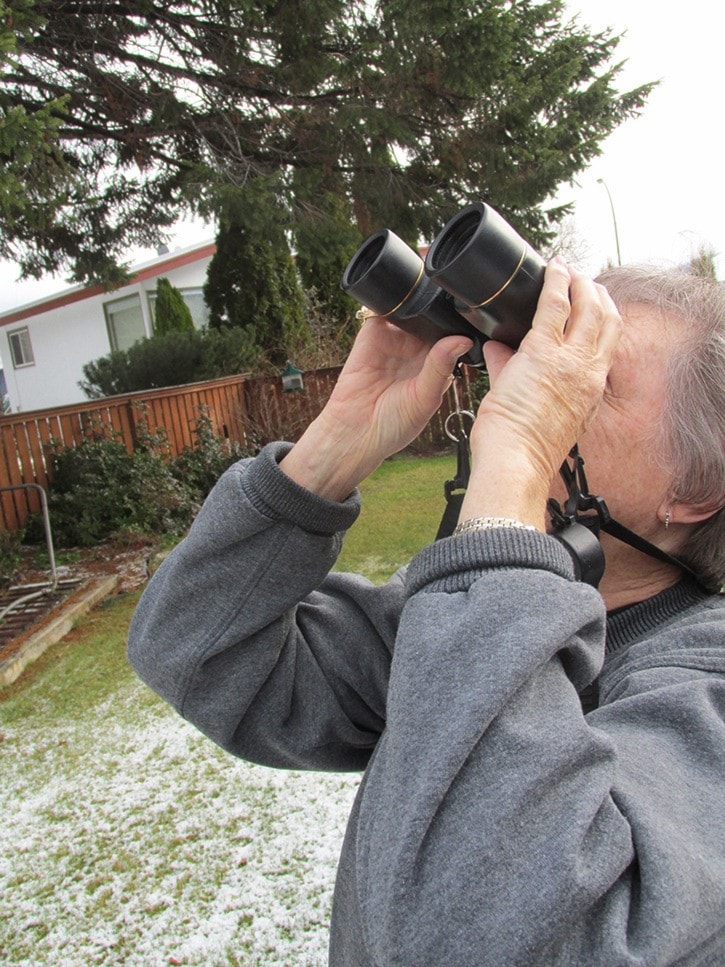When Arnold By grew up in Trail he recalls both wildlife and bird populations being sparse.
A large forest fire raged through the area in the early 1900's followed by sulphur dioxide emissions from the old smelter, he said.
“There were no bobcats, turkeys or finches,” he said. “In the old days the hills were covered in grass, now we see shrubs grown as high as 30 feet. Some birds, like the song birds, continue to take a beating. But others like ducks and geese have increased because of improved habitats for nesting.”
By's observations are leading up to the 115th Christmas Bird Count (CBC) that he's been part of since the event began locally in 2005.
Christmas bird counts are held each year on any one-day period between Dec. 14 and Jan. 5. Areas under study by the birders are divided into 20 kilometre "circles" that stay the same from year to year to try to get an accurate survey of the number of particular species in each area.
This year's CBC is slated for Dec. 14 when a handful of Greater Trail bird watchers will be breaking out their binoculars and heading out to tally up their feathered friends at feeders and areas around watering holes and parks from Rossland out to the Beaver Valley.
The results are sent to Bird Studies Canada to be added to counts from the U.S., Latin America and the Caribbean.
The annual counts can fluctuate depending on weather conditions, says By.
“You need to take a long term view in order to get any level of data on it,” he explained. “I suspect the culmination of insecticides used in warm countries where the birds yield over winter and destroying habitants by cutting down trees affect the populations the most.”
Linda Szymkowiak, the lead counter in Rossland, has been interested in birds since she was a child and her circle extends from from Paterson to the Strawberry Pass.
"In Rossland if we see 30 species it's a good count," she said. "A lot of it depends on the weather conditions, if the fog descends it gets tougher and snow cover can be a problem."
Szymkowiak says she has noticed fewer numbers over the years that she's been involved in the CBC and that the count is a valuable tool to track the area’s environmental health.
“Every year there's more habitat destroyed, logging changes the habitat of the Varied Thrushes and the Hermit Thrushes, you don't see as many of them,” she said. “There's an overall decline, partly the insectivores like the barn swallows, agriculture has changed things for many species. Change the habitat and you change the birds.”
The practice of maintaining regular areas of study over a number of years provides important data for environmental studies and bird conservation efforts. Results from the CBC are used in assessment reports that added the Western Screech-Owl, Rusty Blackbird, and the Newfoundland Red Crossbill to the Species At Risk Act lists.
For more information go to the Bird Studies Canada website at bsc-eoc.org or visit audubon.org.
